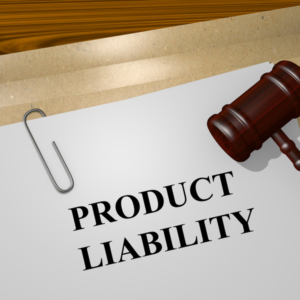When consumers purchase a product, it’s reasonable to expect that it will perform as advertised. Unfortunately, some products fail to deliver on their promises — and when they do, the consequences can be deadly.
Were you injured by a defective product in Mississippi? You could have a valid product liability claim against any or all of the parties that ultimately placed the product in your hands.
Your product liability claim will likely be based on one of the three types of product defects: a design defect, a manufacturing defect, or a marketing defect. In some instances, your claim may even involve multiple defects. An experienced product liability attorney can help determine your legal options and fight for the compensation you’re owed.
At Derek L. Hall, PC, we have over 25 years of experience representing Mississippi accident victims who are injured in accidents caused by someone else’s recklessness. Let us put our results-oriented approach to work for you.
We can get started on your product liability claim today. Call or contact us for a free consultation.
What is Product Liability?
In order to proceed with a product liability case, you must prove that you were injured by the product while using it as intended.
There are three primary ways to show that a product is defective:
Design Defect
Some product liability claims arise because the design of the product is flawed and inherently unsafe. This means that from the start, a product with a design flaw is unreasonably dangerous and increases the risk of injury or death to the consumer.
A mistake in a product’s design will affect every item that is made using that design. Many times, design defects involve large-scale recalls.
Some examples of design defects include a battery that catches fire when it is being used within its capacity, or an infant’s toy that is designed with small parts that could be a choking hazard.
Another well-known example of a design defect is the massive recall of Takata-brand airbags. The airbags were recalled due to a design defect that made them susceptible to exploding and spraying passengers with metal shrapnel.
Manufacturing Defect
In the case of a manufacturing defect, the design of a product is not in question. Instead, the defect occurred when the product was being assembled.
For example, a factory error may result in the wrong material being used in the making of a product. As a result, the product does not conform to the product’s intended design and may be unable to perform safely as planned.
A manufacturing defect can be introduced in different ways, such as when:
- Inferior quality materials were used.
- There was poor workmanship in the making of the product.
- There was inadequate oversight or supervision during manufacturing.
- The manufacturer had insufficient quality control procedures in place.
- Faulty product testing did not detect flaws in the product.
Unlike design defects, a manufacturing defect may not necessarily affect all of the products manufactured. It may only affect one lot number, for example. Some examples of manufacturing defects include automobile tires that were manufactured using the wrong type of rubber or a medicine that was contaminated because it was not properly sealed.
Marketing Defect
A marketing defect usually occurs prior to its being released into the marketplace. To prove that a marketing defect is present, you must first show that the product has potentially dangerous characteristics that can harm the consumer. Additionally, you must show that the manufacturer of the product failed to provide adequate instructions or warnings related to the product’s proper and intended use.
Common examples of marketing defects include:
- Failure to warn: This is the most typical marketing defect and carries the highest risk of harm to the consumer. Products that are likely hazardous must have proper warning labels to inform consumers of its potential dangers. Absent this information, injuries or even death can result.
- Insufficient directions: Some products can carry a potentially dangerous risk if used improperly. Complete information and instructions on how to use the product must be included. The manufacturer or retailer can be held liable if they fail to provide adequate guidelines on a product’s correct use.
- Advertising or promotions that are false and misleading: If the product is marketed with false or ambiguous information that does not accurately state its potential hazards, the manufacturer or retailer can be held liable for any injuries that their advertising subsequently causes.
Some examples of marketing defects include improper or missing age-appropriate warnings on toys or failing to warn of potential toxic fume exposure from the use of pesticides.
Contact a Product Liability Lawyer Today
If you were injured due to a product defect, don’t hesitate to contact the Mississippi product liability attorneys at Derek L. Hall, PC Our legal team has decades of experience providing aggressive and compassionate support to innocent people who have been injured through no fault of their own. Let help you fight for the full and fair compensation you deserve.
At Derek L. Hall, PC, we believe that justice shouldn’t be limited only to those who can pay. That’s why we take cases on a contingency fee basis. There are no fees unless we win.
Contact us today for your free consultation.


